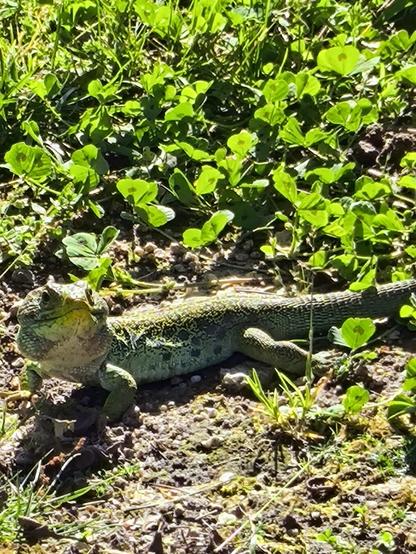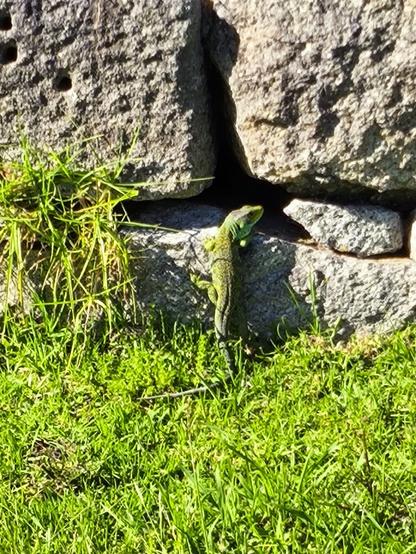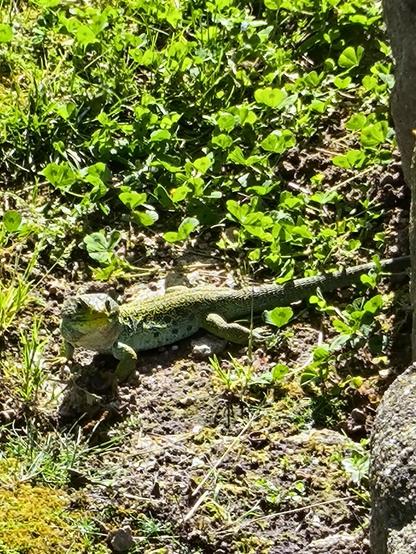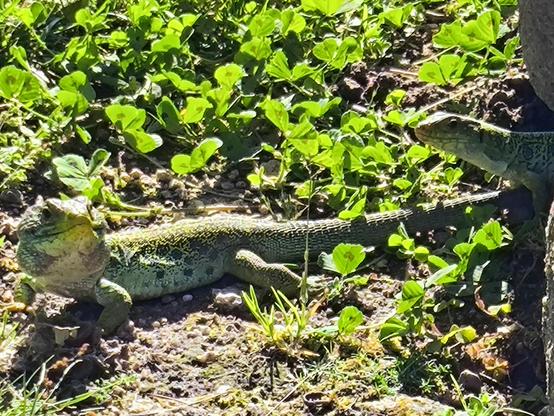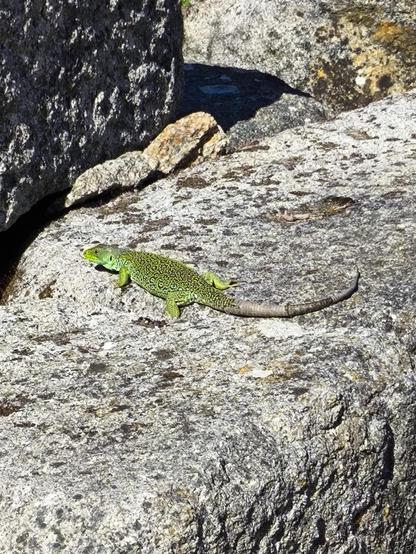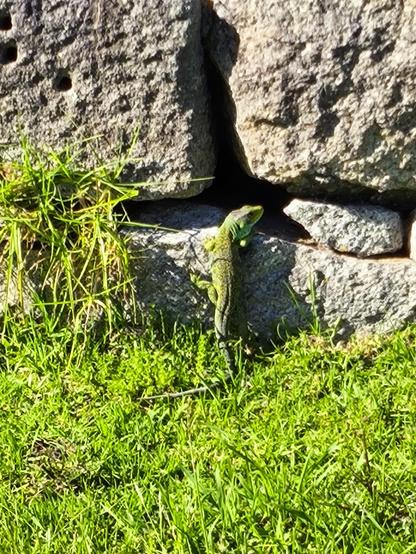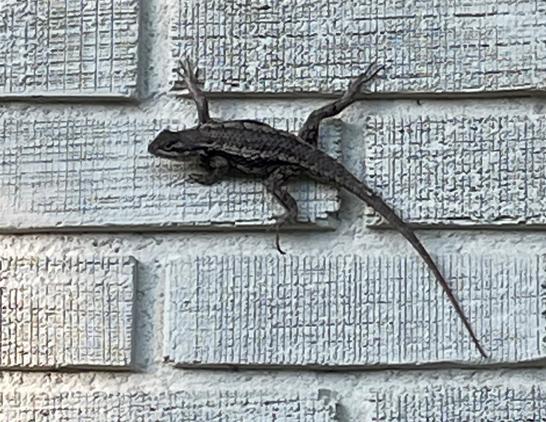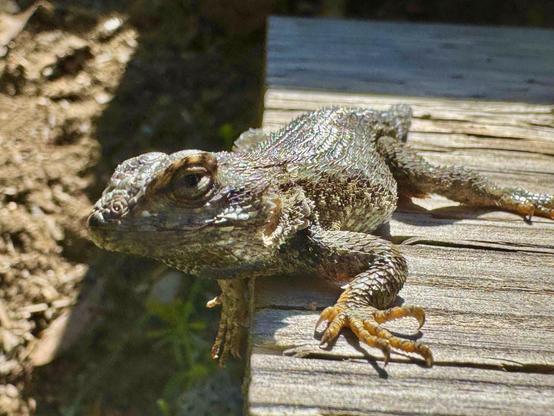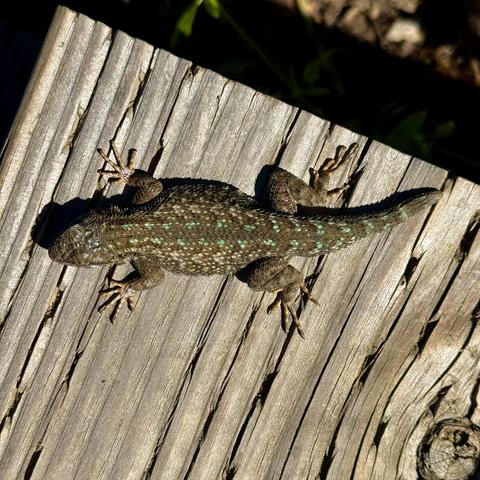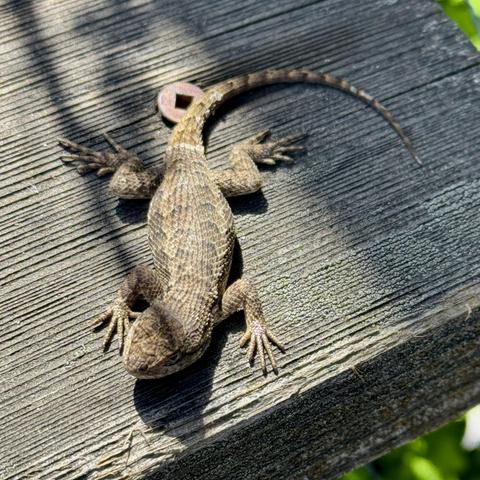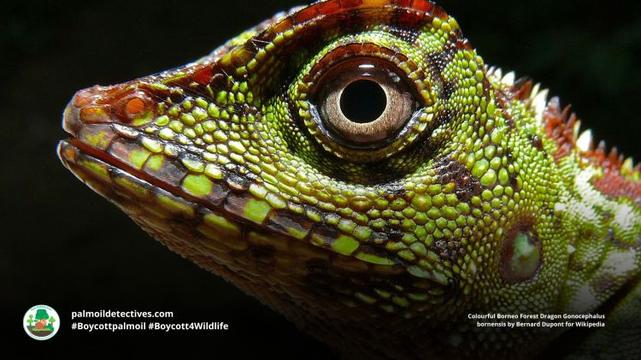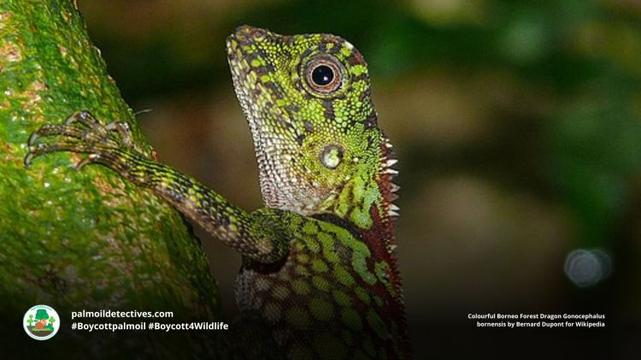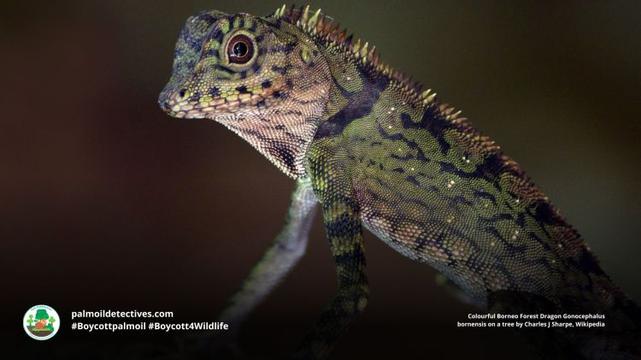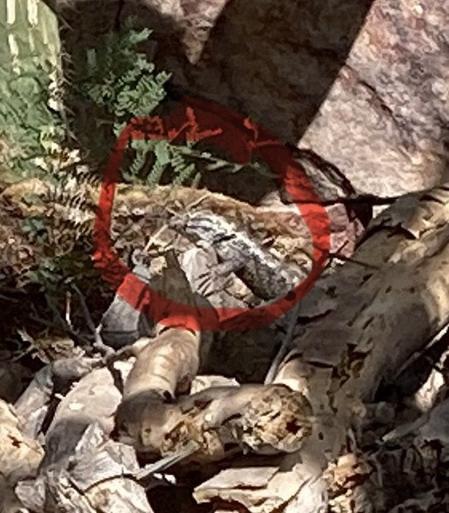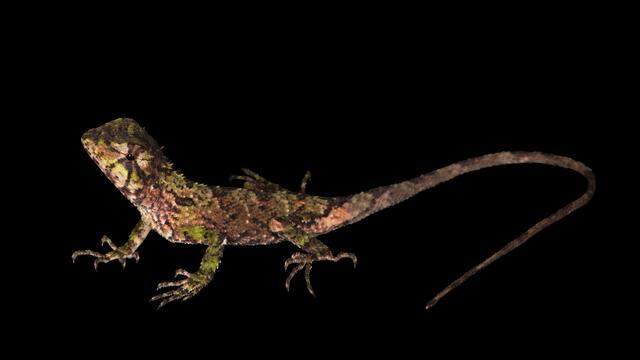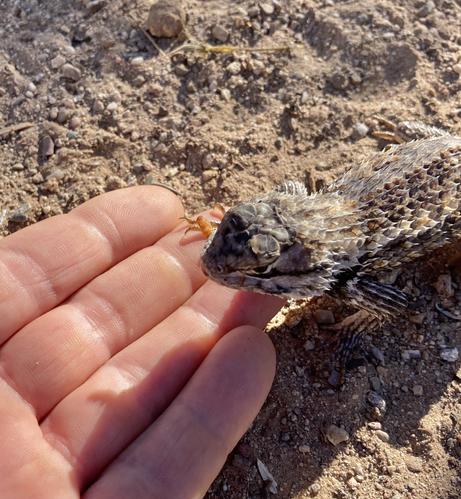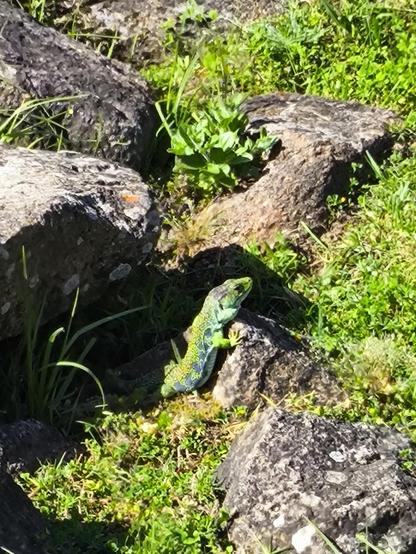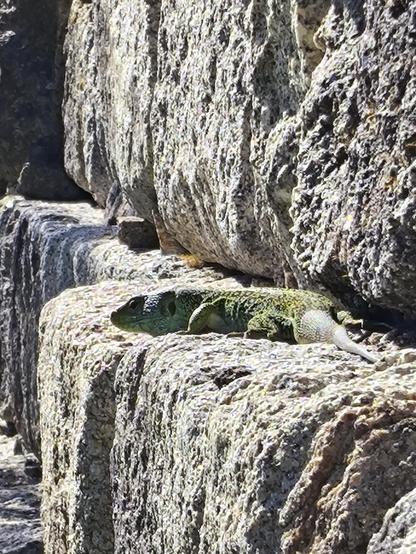Today I went for a walk in the City Park and took some more photos of my friends Water Lizards(Lacerta schreiberi)
#lizards
Today I went for a walk in the City Park and took some more photos of my friends Water Lizards(Lacerta schreiberi)
#Lacertaschreiberi #lizard #lizards #nature
Today I went for a walk in the City Park and took some more photos of my friends Water Lizards (Lacerta schreiberi)
They do pushups to impress me, and they keep getting bigger.
Meanwhile, I'm terrified.
Help the Four-horned #Chameleon of #Cameroon
and #Nigeria
. These beautiful #lizards are #vulnerable due to #deforestation
for #palmoil #cocoa and #mining. Help them to survive when you #BoycottPalmOil #Boycott4Wildlife
http://palmoildetectives.com/2021/04/04/four-horned-chameleon-trioceros-quadricornis/

#LizardReport
Bill, or at least the one I'm calling Bill because I'm not 100% sure it's the same one as last fall, came over and I made him climb up on my leg to get fed. I wanted to get a close look at his face. It turns out he seems to have some glochids stuck next to his eye. Look close at his left eye. Glochids are those tiny hair like micro thorns some cactus having an abundance. I have a patch of Opuntia microdasys and they are fuzzy with glochids, but no thorns.
I debated grabbing him and tweezering the spines out but I was afraid it would spook him and he would never be my friend again. If they're still there tomorrow, I may do it because I'm about to leave for a few months anyway.
Poor Bill!
Borneo Forest Dragons are cold-blooded #reptile royalty in the #rainforests of #Malaysia and #Indonesia. Endless forests are being destroyed for #palmoil and #mining. Fight for #lizards
when u shop #Boycottpalmoil #Boycott4Wildlife @palmoildetectives https://wp.me/pcFhgU-8PU
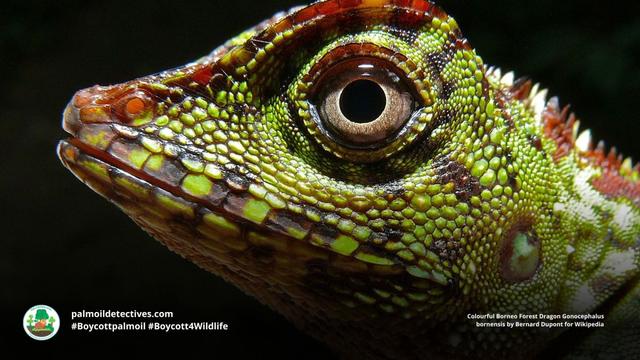
Cheeky, charismatic Borneo Forest #Dragons are the most beautiful #lizards you've never heard of. Living inside of #Borneo's #forests, threats include #palmoil #deforestation and more. Help them survive #Boycottpalmoil #Boycott4Wildlife @palmoildetectives https://wp.me/pcFhgU-8PU

met another of the local #lizards just now. has stumpy tail and blue green (almost turquoise) flecks. it let me get ridiculously close to take pics
there are a lot of #lizards around, and definitely friendly. although ollie sees them as snacks and he’s quick. this one was safe
Borneo Forest Dragons are cold-blooded #reptile royalty in the #rainforests of #Malaysia and #Indonesia. Endless forests are being destroyed for #palmoil and #mining. Fight for #lizards
when u shop #Boycottpalmoil #Boycott4Wildlife @palmoildetect
http://palmoildetectives.com/2025/04/20/borneo-forest-dragon-gonocephalus-bornensis/

Borneo Forest Dragon Gonocephalus bornensis
Borneo Forest Dragon Gonocephalus bornensis
Extant (resident): Brunei Darussalam; Indonesia (Kalimantan); Malaysia (Sarawak, Sabah)
The #Borneo Forest Dragon, also known as the Borneo Anglehead #Lizard is a vividly coloured lizard native to Borneo. This arboreal #reptile is known for their prominent crest and beautifully camouflaged body, allowing them to blend seamlessly into their rainforest surroundings. Found primarily in undisturbed and secondary rainforests, the Borneo Forest Dragon thrives in humid environments, often near streams.
Although the latest assessment by IUCN Red List revealed that they are ‘least concern’, the plans to move the capital of Indonesia to Kalimantan is concerning to conservationists and animal lovers alike. Rampant habitat loss from #palmoil and #timber #deforestation on the island of Borneo posses a grave threat. Protect these striking animals and their rainforest home when you #BoycottPalmOil #Boycott4Wildlife!
Cheeky, charismatic Borneo Forest #Dragons are the most beautiful #lizards you’ve never heard of. Living inside of #Borneo’s #forests, threats include #palmoil #deforestation and more. Help them survive #Boycottpalmoil #Boycott4Wildlife @palmoildetect https://wp.me/pcFhgU-8PU
Borneo Forest Dragons are cold-blooded #reptile royalty in the #rainforests of #Malaysia and #Indonesia. Endless forests are being destroyed for #palmoil and #mining. Fight for #lizards
when u shop #Boycottpalmoil #Boycott4Wildlife @palmoildetect https://wp.me/pcFhgU-8PU
https://www.youtube.com/watch?v=gN-KYLuDvPg
Appearance & Behaviour
Male Borneo Forest Dragons are bigger than females, with longer tails and a more prominent crest. They lay up to four eggs per clutch, which are deposited in a small burrow in the soil. Their colouration provides excellent camouflage from predators in the rainforest canopy, where they spend most of their time.
Males can grow to up to 13.6 cm long and with longer tails than females, who are slightly smaller. These lizards stand out thanks to the crest on their necks and backs, which looks like a sharp, lance-shaped ridge. Males and females show colour dimorphism, with males typically brown, olive, and green, with dark patterns. Meanwhile females have a striking rust-red colour with oval spots on their sides.
Found in the vines and tree trunks of primary and secondary rainforests, these lizards are tree-dwellers, spending most of their time in the forest canopy. When they feel threatened, they raise their bodies and flare the crest on their neck to look bigger.
Threats
Palm oil and timber deforestation
The primary threat to the Borneo Forest Dragon is habitat loss due to the clearing of forests for agriculture, including palm oil plantations, and logging activities. As rainforests are cut down, lizards lose access to the trees they depend on for shelter, food, and breeding sites. Fragmentation of their habitat isolates populations and increases their vulnerability to other threats. They are also threatened by agricultural run-off and toxic pesticides impacting their fragile ecosystem.
Habitat destruction
Selective logging and human encroachment have fundamentally changed the structure of the forest making it less suitable for arboreal species like the Borneo Forest Dragon. Secondary forests, while still viable habitats, do not offer the same quality of resources as primary forests.
Climate change
Extreme weather and changes to rainfall patterns due to climate change are likely to threaten their rainforest ecosystem. This shift in weather conditions may disrupt their breeding and food availability, forcing them to move to less suitable environments.
Diet
The Borneo Forest Dragon is an insectivore, feeding primarily on small invertebrates found in their rainforest habitat. These lizards may opportunistically eat other small prey available in the forest, hunting in the trees.
Mating & Reproduction
Borneo anglehead lizards reproduce by laying eggs. Females deposit up to four eggs in a small burrow dug in the soil. The eggs, which are around 22 mm in length, are laid at intervals of three months. The species’ arboreal nature means they rely on well-structured forests with plenty of trees and lianas for shelter and nesting sites.
Habitat
The Borneo Forest Dragon is endemic to the island of Borneo. Their range includes Malaysia (Sabah and Sarawak) and Indonesia (Kalimantan), along with the Kingdom of Brunei. The Borneo Anglehead Lizard inhabits primary and secondary rainforests up to 700 metres above sea level. Preferring humid environments near streams where they can find abundant food and nesting sites.
Support the Borneo Forest Dragon by going vegan and boycotting palm oil in the supermarket, it’s the #Boycott4Wildlife
Support the conservation of this species
This animal has no protections in place. Read about other forgotten species here. Create art to support this forgotten animal or raise awareness about them by sharing this post and using the #Boycottpalmoil #Boycott4Wildlife hashtags on social media. Also you can boycott palm oil in the supermarket.
Further Information
Ecology Asia. (2024). Borneo anglehead lizard. Retrieved from https://www.ecologyasia.com/verts/lizards/borneo-anglehead-lizard.htm
Iskandar, D. & McGuire, J. 2019. Gonocephalus bornensis. The IUCN Red List of Threatened Species 2019: e.T99929470A99929479. https://dx.doi.org/10.2305/IUCN.UK.2019-3.RLTS.T99929470A99929479.en. Accessed on 15 September 2024.
Wikipedia contributors. (2024). Gonocephalus bornensis. In Wikipedia, The Free Encyclopedia. Retrieved from https://en.wikipedia.org/wiki/Gonocephalus_bornensis
How can I help the #Boycott4Wildlife?
Take Action in Five Ways
1. Join the #Boycott4Wildlife on social media and subscribe to stay in the loop: Share posts from this website to your own network on Twitter, Mastadon, Instagram, Facebook and Youtube using the hashtags #Boycottpalmoil #Boycott4Wildlife.
Enter your email address
Sign Up
Join 1,384 other subscribers2. Contribute stories: Academics, conservationists, scientists, indigenous rights advocates and animal rights advocates working to expose the corruption of the palm oil industry or to save animals can contribute stories to the website.
Mel Lumby: Dedicated Devotee to Borneo’s Living Beings
Anthropologist and Author Dr Sophie Chao
Health Physician Dr Evan Allen
The World’s Most Loved Cup: A Social, Ethical & Environmental History of Coffee by Aviary Doert
How do we stop the world’s ecosystems from going into a death spiral? A #SteadyState Economy
3. Supermarket sleuthing: Next time you’re in the supermarket, take photos of products containing palm oil. Share these to social media along with the hashtags to call out the greenwashing and ecocide of the brands who use palm oil. You can also take photos of palm oil free products and congratulate brands when they go palm oil free.
https://twitter.com/CuriousApe4/status/1526136783557529600?s=20
https://twitter.com/PhillDixon1/status/1749010345555788144?s=20
https://twitter.com/mugabe139/status/1678027567977078784?s=20
4. Take to the streets: Get in touch with Palm Oil Detectives to find out more.
5. Donate: Make a one-off or monthly donation to Palm Oil Detectives as a way of saying thank you and to help pay for ongoing running costs of the website and social media campaigns. Donate here
Pledge your supportLearn about other animals endangered by palm oil and other agriculture
Global South America S.E. Asia India Africa West Papua & PNGOrange-breasted Falcon Falco deiroleucus
Sunda Clouded Leopard Neofelis diardi
Glaucous Macaw Anodorhynchus glaucus
Attenborough’s Long-Beaked Echidna Zaglossus attenboroughi
Nancy Ma’s Night Monkey Aotus nancymaae
Maned Wolf Chrysocyon brachyurus
Learn about “sustainable” palm oil greenwashing
Read more about RSPO greenwashing
Lying Fake labels Indigenous Land-grabbing Human rights abuses Deforestation Human health hazardsA 2019 World Health Organisation (WHO) report into the palm oil industry and RSPO finds extensive greenwashing of palm oil deforestation and the murder of endangered animals (i.e. biodiversity loss)
Read moreAnswer!
I guess this was harder than I thought. I exported the picture at fairly high resolution, but I guess mastodon's compression blurred it a little too much. It's a little easier on a large screen.
Even in person, unless you're used to looking for these lizards, they blend in stunningly well. I can find them, and the other ones, anywhere in the yard in moments because I'm so used to looking for them.
Quince Monitor #Lizards are named for their bright yellow skin and muscular bodies. They are #endangered
by #palmoil #deforestation in #Indonesia
Help them when you #Boycottpalmoil #Boycott4Wildlife @palmoildetect
️
https://palmoildetectives.com/2023/05/28/quince-monitor-banggai-island-monitor-varanus-melinus/?utm_source=mastodon&utm_medium=Palm+Oil+Detectives&utm_campaign=publer
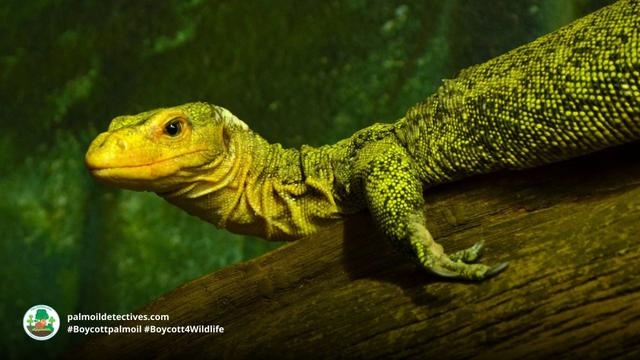
V THE FINAL BATTLE T-SHIRTS
https://www.teepublic.com/user/malcolmdesigns?query=visitors
#NewSpecies!
New forest lizard from #china just snuck in:
Calotes zhaoermii
Treatment: https://treatment.plazi.org/id/685B87BB-BF17-231B-5BD5-FF023664FEBE
Publication: https://doi.org/10.11646/zootaxa.5609.2.8
#Zootaxa #CalotesZhaoermii
#FAIRdata
#science #OA #openaccess #biology #taxonomy #ecology #biodiversity #nature #wildlife #conservation #animals #herpetology #herps #reptiles #lizards #forest
I always whistle when feeding the lizards, at least when first training them. Some don't seem to care much and respond more to me kneeling down and putting my hand on the ground. Others will just come up to me looking for food. A couple of the spiny lizards (including the one I think is Bill from last fall) will run across the yard if I whistle. I think this iguana will eventually respond to whistling.
One thing I'm really curious about is whether they are making the humans=food association with me personally or with anyone. Once one of them gets really tame, I'll have someone else try to get close or call them over.
(hashtagging these with #LizardReport so you can mute them if you get tired of me posting lizard pictures and videos )
The skittish spiny lizard finally figured out that I'm nice and a source for tasty mealworms. He also figured out quickly that whistling means food. I expect him to be following me up onto the porch soon.
This is very well maybe Bill from last year. He's hanging out in the same spot and is the same size. It may have just taken a while to remember me and that whistling means food. He looks different, but that's to be expected because I think they are in there mating season colors now.
Cracking Open Evolution’s Black Box on 'Lizard Island'
On an island in South Florida, scientists use trials to see how natural selection drives evolution in real time.#reptiles #evolution #animalislands #islands #scientistsatwork #science #lizards #partnerstoryinternal #section-Articles
Cracking Open Evolution’s Black Box on 'Lizard Island'
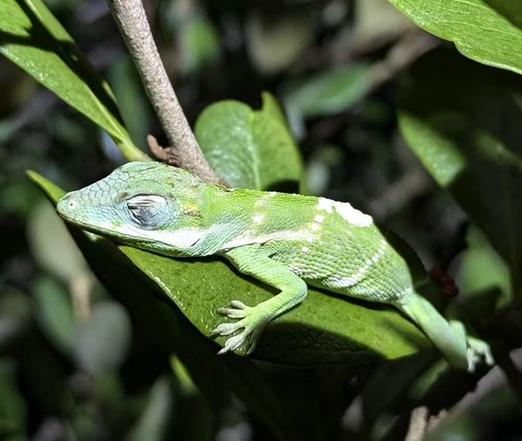
#Lacertaschreiberi #lizard #lizards #nature
Today I went for a walk in the City Park and took some more photos of my friends Water Lizards male (Lacerta schreiberi)
The same tiger whiptail in the previous post eating a dried meal worm. Note the little hula-wiggle it does near the beginning. I don't know what this is, but it seems unique to whiptails.
Out in the desert, even getting close enough to one to snap a photo is difficult. But with an open area where you can throw food that they can see, they'll tame up very quickly. I whistle when I feed them to get them used to that meaning food. It seems to work with some animals, but others ignore it.


